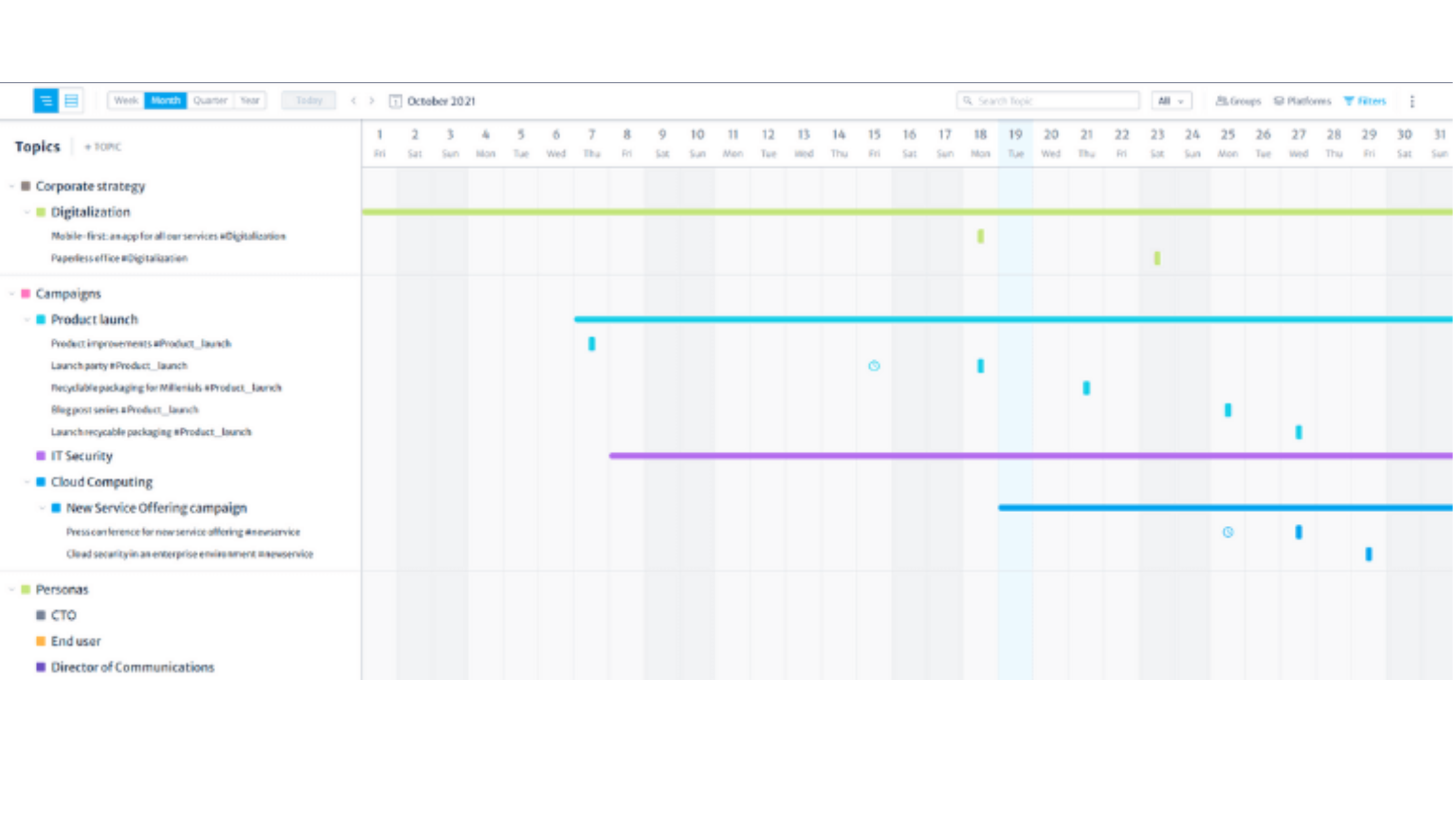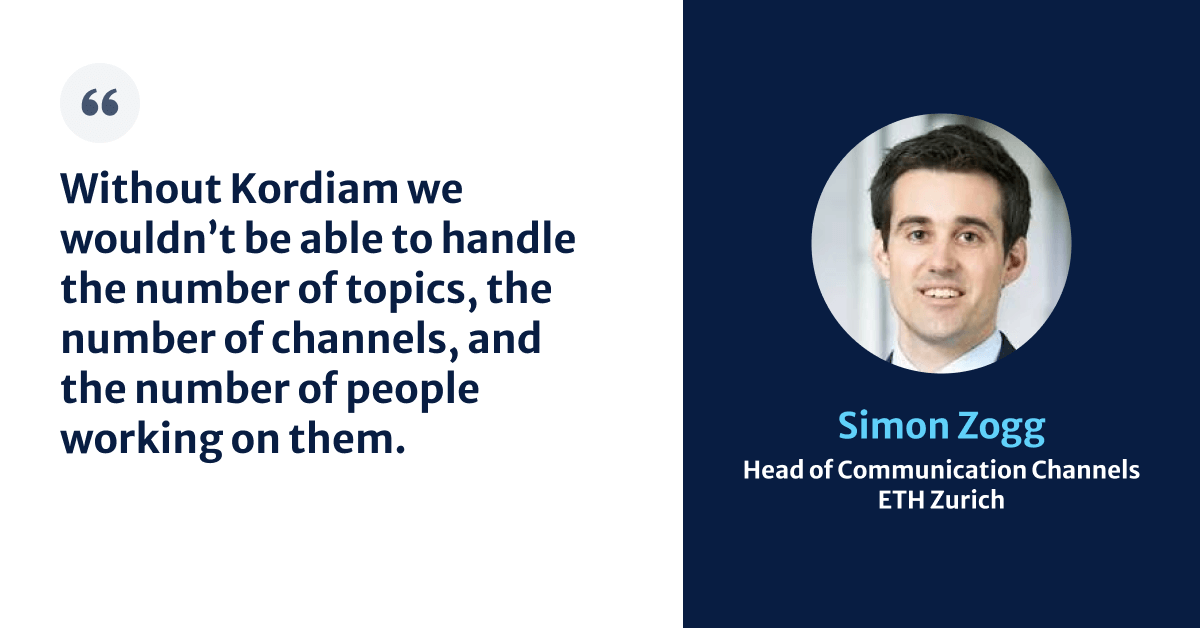How Swisscom Uses Kordiam to Manage a Complex Corporate Newsroom
“First of all, it is important to know that we are not a media company,” begins Roger Baur, who is editor-in-chief at Swisscom’s Newsroom. Being editor-in-chief of a non-media company neatly encapsulates the apparent contradiction that so many companies now find themselves dealing with, especially when using a content planning tool to manage their communications effectively.
No, of course, Swisscom is not a media company; it is a telecoms provider in Switzerland, supplying broadband, mobile, and TV to the country and beyond via its majority shareholding in Italian telco Fastweb.
The Need for a Brand Newsroom
Swisscom requires a brand newsroom because it generates a large amount of information that needs to be coordinated, filtered, and published consistently. To put it in simpler terms, a brand newsroom is one way to realize integrated communications.
It also employs a system involving no fewer than three different editors-in-chief working on a weekly rotation, which is remarkably sophisticated for a ‘non-media’ company. That schedule requires disciplined scheduling to work smoothly, which is where Kordiam comes in.
Planning Across Platforms with a Content Planning Tool
Michèle Westhues, Digital Experience Manager at Swisscom’s Corporate Communications, gives us an idea of the scale and nature of Swisscom’s publishing output.
“Within Swisscom’s corporate communications, we mainly publish online across various channels. This includes the intranet, the Internet, newsletters, blogs, and Twitter. All of which are very different. We publish by channel several times a day (intranet), several times a week (Internet, blogs, Twitter), or, depending on the individual newsletter, perhaps only a few times a year.”
Kordiam’s Role in the Integrated Communications Strategy
“With Kordiam we have an overview of all our channels on a planning platform and can also access the planning of channels in other departments such as marketing communications,” explains Michèle Westhues. “Users enter their articles, topics, events, and campaigns here.”
Editor-in-chief Roger Baur explains how it works: “As an example, a topic manager will enter an event into Kordiam such as ‘new product X launching on May 1st.’ That means that this topic then gets taken up at a planning coordination meeting where it is decided if it works best as an external article, a media release, a tweet, or a combination of them all."
"After this session, the topic is handed over to an editor. The coordination of who delivers precisely what, and when (video, text, picture, everything together, mixed, parts of it, etc.) is done directly by the editor. Since we use Kordiam as a content planning tool, it doesn’t play a role beyond that point.”
Publishing Past, and Future
Prior to using Kordiam as their editorial content planning tool, Swisscom relied on a SharePoint-based tool. SharePoint is web-based and collaborative with the benefit of Microsoft Office integration, but it is primarily a document management and storage system with little by way of brand newsroom planning features.
While Swisscom restricts its use of Kordiam to the planning calendar, it clearly values that function enough that the previous SharePoint approach was streamlined to Kordiam. This is in line with Swisscom’s stated ambition to optimize both the publishing workflow and standardize tools.
Goals for Faster, Better Publishing
“Our goals are faster publishing, better targeting, and the reduction of the number of systems used. We work in an increasingly agile environment with channels coming and going, while the boundaries between different formats are becoming increasingly blurred.” - Roger Baur
Swisscom may not be a media company, but such is the pace of media development that it is surfing the same wave of media change as pure media players.
Kordiam’s goal is to help keep it on top of that wave.

